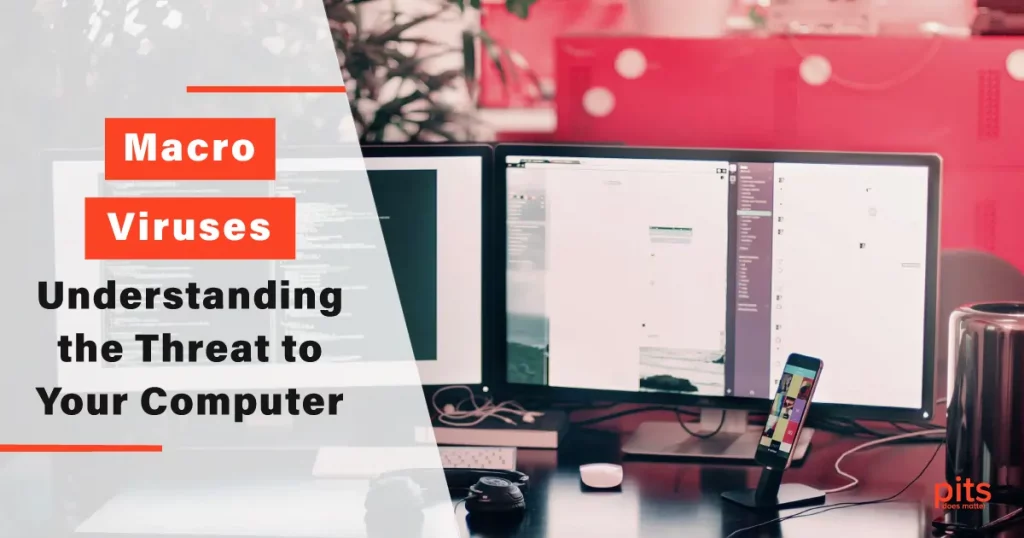In the ever-evolving landscape of computer viruses, macro viruses have emerged as a persistent and concerning menace. These malicious programs exploit the macro functionality present in popular software applications, such as Microsoft Office Suite, to propagate and wreak havoc on systems. In this blog post, we will delve into the nature of macro viruses, their modes of infection and spread, and discuss effective measures to mitigate the macro virus threat.
A macro virus is a specific type of computer virus that capitalizes on the macro programming language integrated into software applications, such as Microsoft Word. By embedding malicious code within an infected document, macro viruses leverage macros to execute their harmful actions. Unlike traditional viruses that target the operating system or executable files, macro viruses exploit macros in office productivity applications, making them particularly troublesome.
Infection Vectors and Spread
Macro viruses often infiltrate systems through infected documents, typically in the form of email attachments or files downloaded from the internet. When unsuspecting users open an infected document, the embedded malicious code is activated, allowing the virus to gain entry into the system. Microsoft Word, with its extensive macro support, has become a popular target for macro viruses.

Once a macro virus successfully infiltrates a system, it can rapidly spread by infecting other documents or data files. For instance, when an infected Word document is shared with others or when a user opens an infected file and enables macros, the virus can propagate further.
This self-replication capability enables macro viruses to spread quickly, infecting numerous systems within a short period.
Mitigating the Macro Virus Threat
To defend against macro viruses, it is crucial to adopt proactive measures that mitigate the risk and prevent infections. Here are some effective strategies to consider:
Keep antivirus software up to date
Utilize reputable antivirus software with real-time protection and ensure it is regularly updated. Antivirus programs can detect and remove known macro viruses, providing a valuable layer of defence against these threats.
Exercise caution with email attachments
Exercise caution when handling email attachments, particularly those received from unknown or suspicious sources. Scan all attachments with antivirus software before opening them, and refrain from enabling macros in unsolicited documents.
Disable macros by default
Configure software applications to disable macros by default. This ensures that when you open a document, the macros remain inactive, thereby reducing the risk of macro virus execution. However, exercise caution with legitimate documents that require macro functionality.
Enable macros cautiously
If you receive a document from a trusted source that requires macros to be enabled, exercise caution and verify its authenticity. Before enabling macros, ensure that the document is from a reliable sender and that you are expecting a file with macro functionality.
Regularly update software
Keep your operating system and applications up to date with the latest security patches and updates. Software updates often include security enhancements that address known vulnerabilities, reducing the risk of infection by macro viruses.
Educate users about the risks
Raise users’ awareness of the dangers of macro viruses and the importance of following safe computing practices. Train individuals to recognize suspicious emails, avoid opening unsolicited attachments, and exercise caution when enabling macros in documents.
The Infamous Melissa Virus: A Macro Virus Case Study
One notable example of a macro virus is the Melissa virus, which emerged in 1999 and rapidly spread through Microsoft Word documents. The Melissa virus, written in the same macro language used by Microsoft Office applications, infected thousands of computers worldwide. Once activated, it would automatically send infected documents to addresses found in the victim’s address book, causing widespread disruption.
The Melissa virus exemplifies the destructive potential of macro viruses. Its rapid propagation showcased how easily macro viruses could exploit the trust users place in commonly used software, such as Microsoft Word.
The Melissa virus served as a wake-up call for the cybersecurity community, highlighting the need for enhanced measures to combat macro viruses effectively.

Macro viruses continue to pose a significant threat to computer systems globally. By exploiting the macro functionality of popular software applications, such as Microsoft Office Suite, these viruses infiltrate systems and propagate through infected documents.
However, by adopting effective security practices, such as keeping antivirus software up to date, exercising caution with email attachments, disabling macros by default, and enabling macros cautiously, users can mitigate the macro virus threat and protect their systems from harm.
It is essential to remain vigilant and proactive in the face of evolving cyber threats. By fostering a culture of awareness and implementing robust security measures, individuals and organizations can fortify their defenses against the persistent menace of macro viruses. Stay informed, stay protected, and stay ahead of the ever-present dangers lurking in the digital realm.
Frequently Asked Questions
What is a macro virus, and how does it work?
A macro virus is a type of computer virus that infects documents, spreadsheets, and other files that support macro functionality. These viruses exploit the macros, which are small programs embedded within these files, to execute their malicious code. When a user opens an infected file and enables macros, the virus is activated, potentially causing damage or spreading to other files.
How do macro viruses spread?
Macro viruses spread primarily through infected files, often transmitted as email attachments or downloaded from the internet. When a user opens an infected file, the macro virus gains access to the system. If macros are enabled, the virus can execute its code, infect other files, and spread to other devices through shared files or emails.
What are the risks associated with macro viruses?
Macro viruses can cause various risks and consequences, including data loss or corruption, unauthorized access to sensitive information, system instability or crashes, and the potential to propagate to other systems or networks. They can also exploit email features to send infected files to the victim’s contacts, further spreading the virus.
Can antivirus software protect against macro viruses?
Yes, antivirus software can provide protection against macro viruses. It scans files for known virus signatures, detects malicious code embedded in macros, and helps remove or quarantine infected files. However, it’s essential to keep antivirus software up to date to effectively combat the latest macro virus threats.
How can I prevent macro virus infections?
To prevent macro virus infections, consider the following measures:
- Disable macros by default in software applications and enable them only when necessary from trusted sources.
- Be cautious when opening email attachments, especially from unfamiliar or suspicious senders. Scan attachments with antivirus software before opening them.
- Keep your operating system and software applications up to date with the latest security patches and updates.
- Educate yourself and your users about the risks associated with macros and provide training on safe computing practices.
- Utilize reputable antivirus software with real-time protection, and regularly update it to ensure optimal defense against macro viruses.
